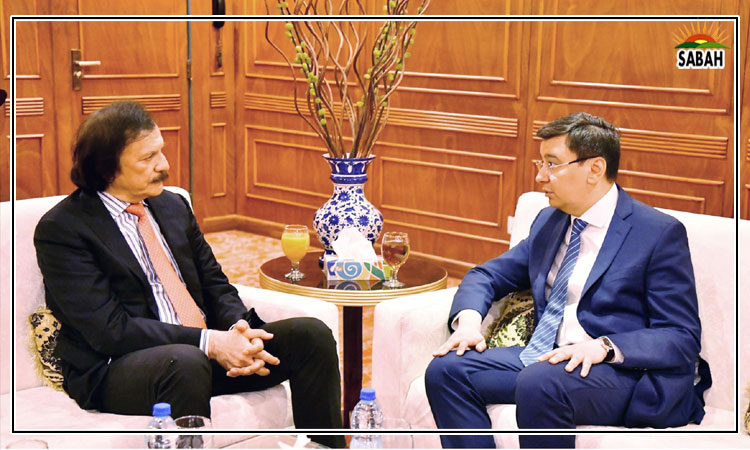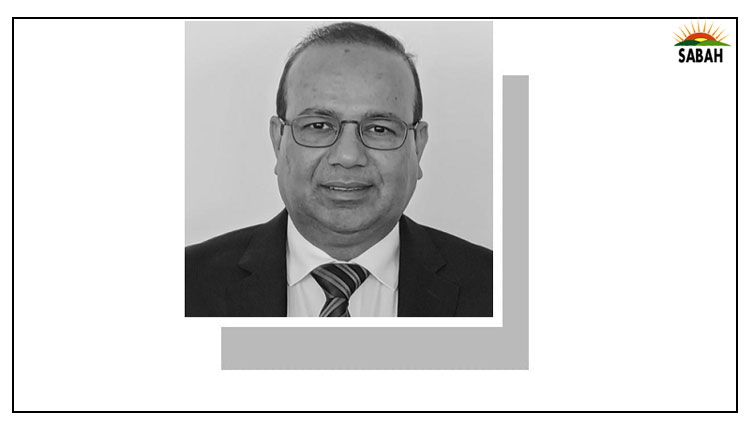A recipe for economic growth…Saeed Ahmed
PAKISTAN has a history of sacrificing economic growth for short-term macroeconomic stabilisation. At its core, structural weaknesses of the economy the low tax-to-GDP ratio and foreign exchange deficit do not allow high growth rates to be sustained via demand generation. Pakistan, which averaged over 6pc GDP growth until the 1980s, has over the past four decades perpetuated boom-and-bust cycles and remained trapped in debt, inefficiency, and stagnation. In the first six months of the current year, the economy grew by just 1.5pc.
What we need is a consistent growth rate of over 6pc, compatible with the countrys demographic transition, to absorb the 17 million unemployed and idle youth, and the 1.5m Pakistanis entering the labour force every year.
In recent years, multiple, consecutive crises across constitutional, political and economic spheres have further threatened our economic resilience and wellbeing. The underperformance of our economy is quite glaring, with much compromised performances from manufacturing and exports. In the face of major security, fiscal, demographic, and environmental challenges, the country now needs to step up efforts to strengthen trust and stability.
To reverse the trend, policymakers must prioritise long-term structural reforms over short-term fixes. Essentially, we need a paradigm shift from state-led infrastructure spending to private-sector-driven development focused on human capital, technology, and institutional reforms.
We need a paradigm shift from state-led infrastructure spending to private-sector-driven development.
We must dismantle the large Public Sector Development Programme, which is an outdated, wasteful, and politically driven framework heavily focused on physical infrastructure, leading to higher budget deficits and mounting debt. Politicians prioritise projects that serve their constituencies rather than the economy, fostering inefficiency and corruption. More importantly, the fixation on infrastructure has come at the expense of investment in human capital, resulting in brain drain and declining productivity. Infrastructure alone does not drive growth. Global experience shows that human capital, innovation, and institutional reforms not roads and flyovers drive sustained economic progress.
We will need to think in very fundamental ways about how our society changes in response to information technology. This would entail making a large allocation of resources to expand state-of-the-art technical and vocational training programmes in collaboration with reputable foreign institutions, setting up of IT institutes in various cities, providing financial support to graduates through subsidised credit, and assisting youth in project design and implementation. The scale of these initiatives must be large enough to attract diverse talent.
Importantly, it is the private sector that has to invest more in order to break out from the past and play its role in capital formation, building on the pillars of entrepreneurship and innovation. The government, for its part, must urgently reduce the financial and production costs to make businesses more competitive.
There is a great deal that needs to be done in the financial sector. We need a more satisfactory flow of credit for housing, infrastructure, and small- and medium-sized businesses.
Pakistans banking industry remains frustratingly disconnected from broader economic development. In FY24, while the economy grew anaemically, the banking sectors after-tax profit surged 30.4pc to Rs645 billion, yielding a staggering 24pc return on equity. Despite this financial strength, banks have failed to support economic expansion, as reflected in Pakistans disappointing credit-to-GDP ratio of 9pc the lowest amongst emerging countries. While high interest rates and production costs deter businesses, banks preference to lend to blue-chip corporates rather than small businesses and start-ups, combined with the governments insatiable appetite for bank credit, is primarily responsible for this alarming disparity.
Yet, banks top executives enjoy outrageous perks. In one instance, the president/CEO of a bank in this impoverished nation took home an ex-gratia payment of Rs1.057bn and cash bonus of Rs163.6 million, in addition to fixed remuneration of Rs98.1m and in-kind benefits in 2024. This is reckless behaviour and an example of blatant regulatory capture. The SBP should act.
Beyond banking, there are capital markets which serve as an important source of funding for the corporate sector. Deepening and strengthening these markets is crucial in mobilising greater domestic investment and fostering sustainable economic growth.
Foreign investment must be pursued with prudence: avoid foreign borrowing in non-tradable sectors. A case in point is the CPEC investment deal, which was much touted as a game changer in 2015. A decade later, investment rates, instead of improving, have declined. CPECs failure to improve investment can be attributed to its focus on non-tradable sectors, lack of technology transfer, foreign-dominated financing, and absence of market discipline. Take, for instance, Pakistans most expensive airport, which made international headlines as a $240 million Ghost Airport at Gwadar that has no planes, no passengers. The brand-new airport sits empty while the city around it grapples with blackouts and water shortages. The same officials who have now chalked out grand jargons like Uraan Pakistan had similarly labelled CPEC transformational. Now, with SIFC, the same mistakes risk being repeated.
To justify foreign investment, domestic productivity gains must outweigh liabilities. Investment should focus on high-tech industries, not low-tech infrastructure. Financing should minimise foreign liabilities by leveraging domestic debt and ensuring equity valuation is market-based. Foreign investment can be beneficial, but only within a sound macro-financial framework that sustains growth and stability.
The SBP should continue to build reserves, saving a significant portion of its currently $30bn plus remittances while maintaining a market-based exchange rate. This stabilises the financial sector, boosts investor confidence, manages demand cycles, and anchors inflation while maintaining monetary independence.
Fiscal policy needs to be aligned. The government should implement market-value-based land/property taxes to fund infrastructure, curb speculation, and promote productive investment. Public investments should be managed under independent fiscal oversight. In a world of rising inequality, there is going to be a need for more aggressive but fair taxation.
All said and done, confidence is the cheapest form of stimulus. This is where the current government, facing a legitimacy crisis, has failed to instil the confidence necessary to encourage domestic and foreign investment. This conundrum must be resolved. By following these principles, Pakistan can avoid financial crises, attract productive investment, and achieve sustainable economic growth.
Courtesy Dawn












